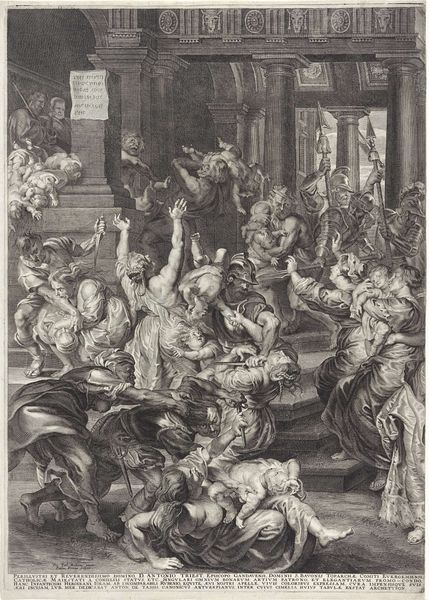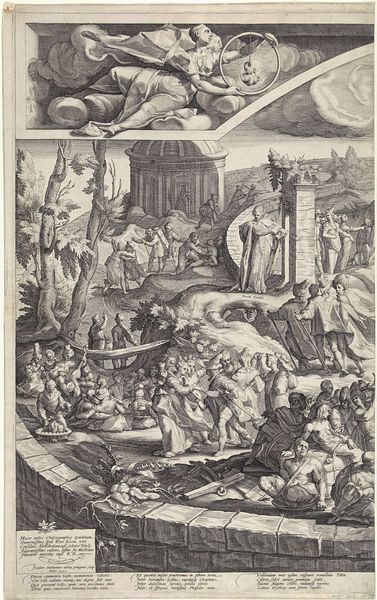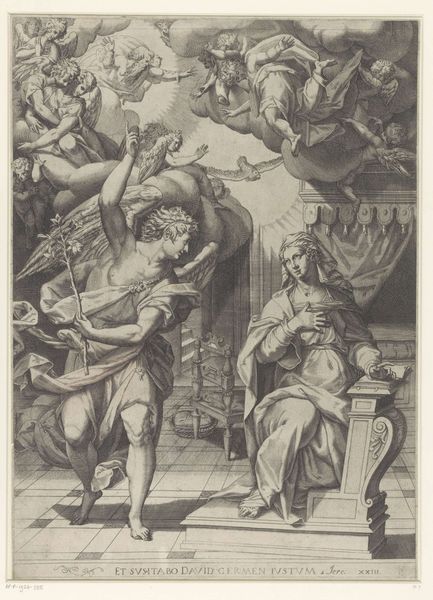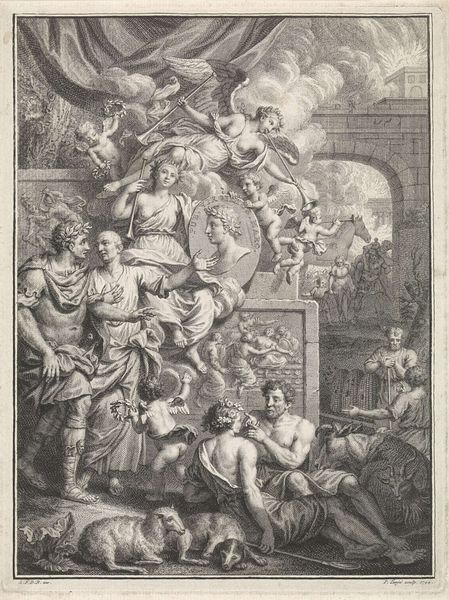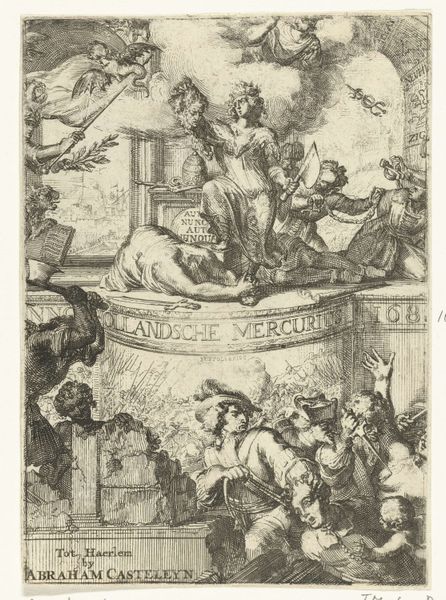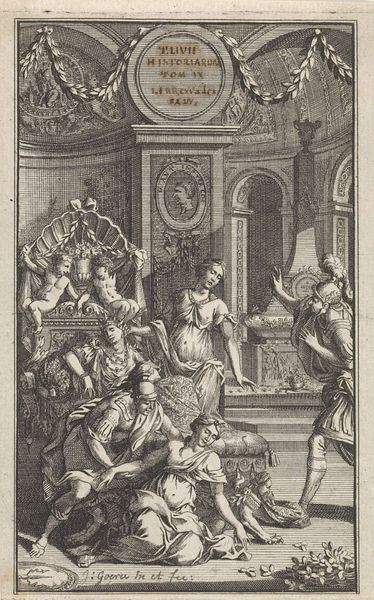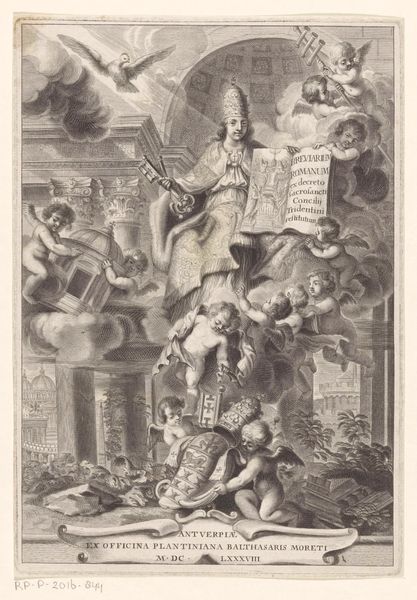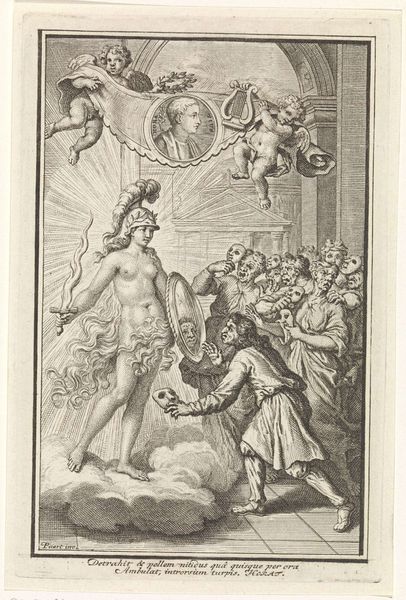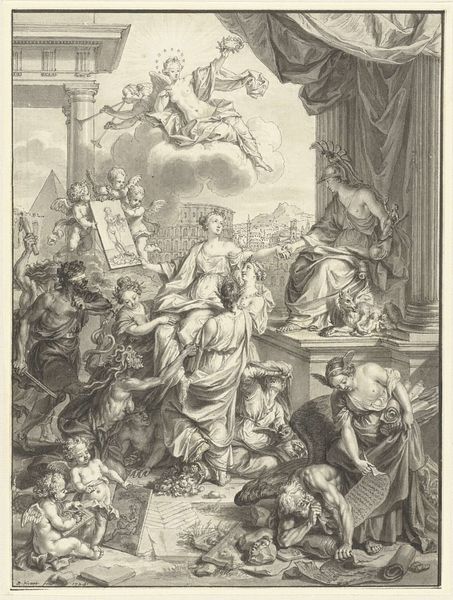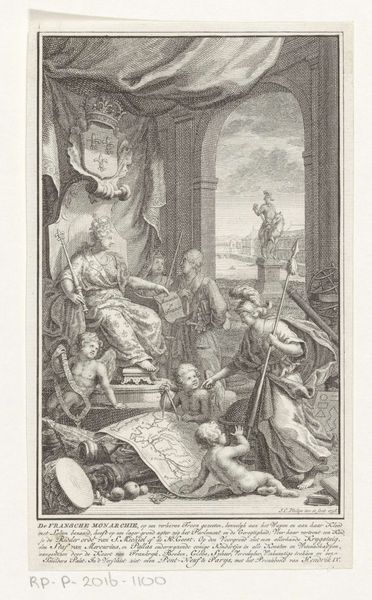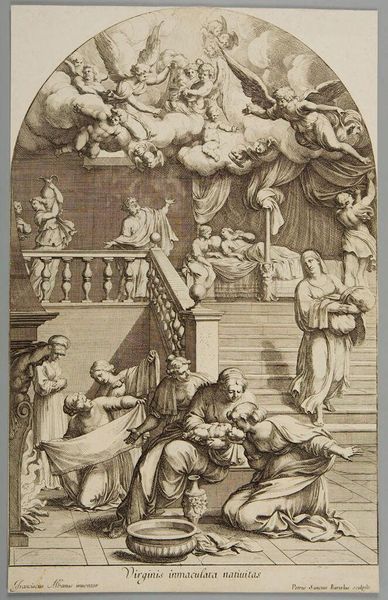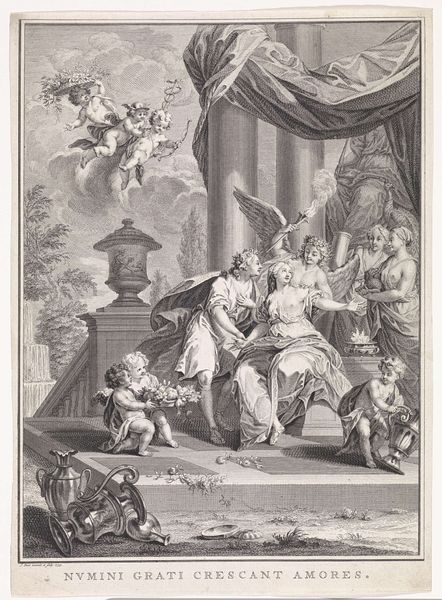
Geschiedenis geeft de Schilderkunst een schrijfveer om de geschiedenissen van de Nederlandse vorsten op te tekenen 1732
0:00
0:00
print, engraving
#
portrait
#
allegory
#
baroque
# print
#
old engraving style
#
figuration
#
11_renaissance
#
traditional art medium
#
line
#
history-painting
#
engraving
Dimensions: height 346 mm, width 220 mm
Copyright: Rijks Museum: Open Domain
Editor: Here we have Bernard Picart's 1732 engraving, "Geschiedenis geeft de Schilderkunst een schrijfveer om de geschiedenissen van de Nederlandse vorsten op te tekenen," which translates to "History gives Painting a quill to record the histories of the Dutch princes." There is an old engraving style to it and a dramatic baroque composition. It feels very crowded, almost chaotic. What do you see in this piece? Curator: The complexity is deliberate, functioning on a series of carefully structured visual relationships. Notice how Picart uses line to create distinct zones, each filled with allegorical figures. What impact do you think this linear precision, almost a desire for perfect lines, has on our understanding of the artwork’s overall intention? Editor: I suppose it helps organize all of the symbolic elements, to lead our eye through them. I mean, there's a figure who represents History passing a quill to Painting, with the Dutch rulers in the background. Curator: Precisely. The artist utilizes the contrast of dark and light to emphasize the three-dimensional forms, while also flattening certain elements to reinforce the print's surface. The interplay between depth and surface animates the composition and directs the gaze. Does the contrast grab your attention? What is your view on its dramatic presentation of allegory? Editor: It does draw my eye and helps distinguish the various groups, even though they're densely packed together. Without it, I would not know what I was looking at. Curator: The linear qualities create these different symbolic and artistic planes, from heavenly to terrestrial, with precision of placement. Also, what are your views on the blank architectural area in the background and what meaning might it reveal in understanding space in this piece? Editor: Well, the background helps draw my attention to the figures in the foreground, and, therefore, adds a kind of focus for the allegory that might have been missed if the drawing were densely packed all the way to the back. It’s also interesting how those spaces shift and open the artwork in unique ways that provide areas of separation. Curator: This careful manipulation of the elements generates the intended effect; however, that's all the time we have. I hope this analysis has clarified Picart's intent in manipulating the viewer's understanding through formal and compositional relations. Editor: Yes, this really highlighted for me how important formal structure is in an artwork with allegorical meaning, ensuring the meaning comes through visually. Thank you.
Comments
No comments
Be the first to comment and join the conversation on the ultimate creative platform.
